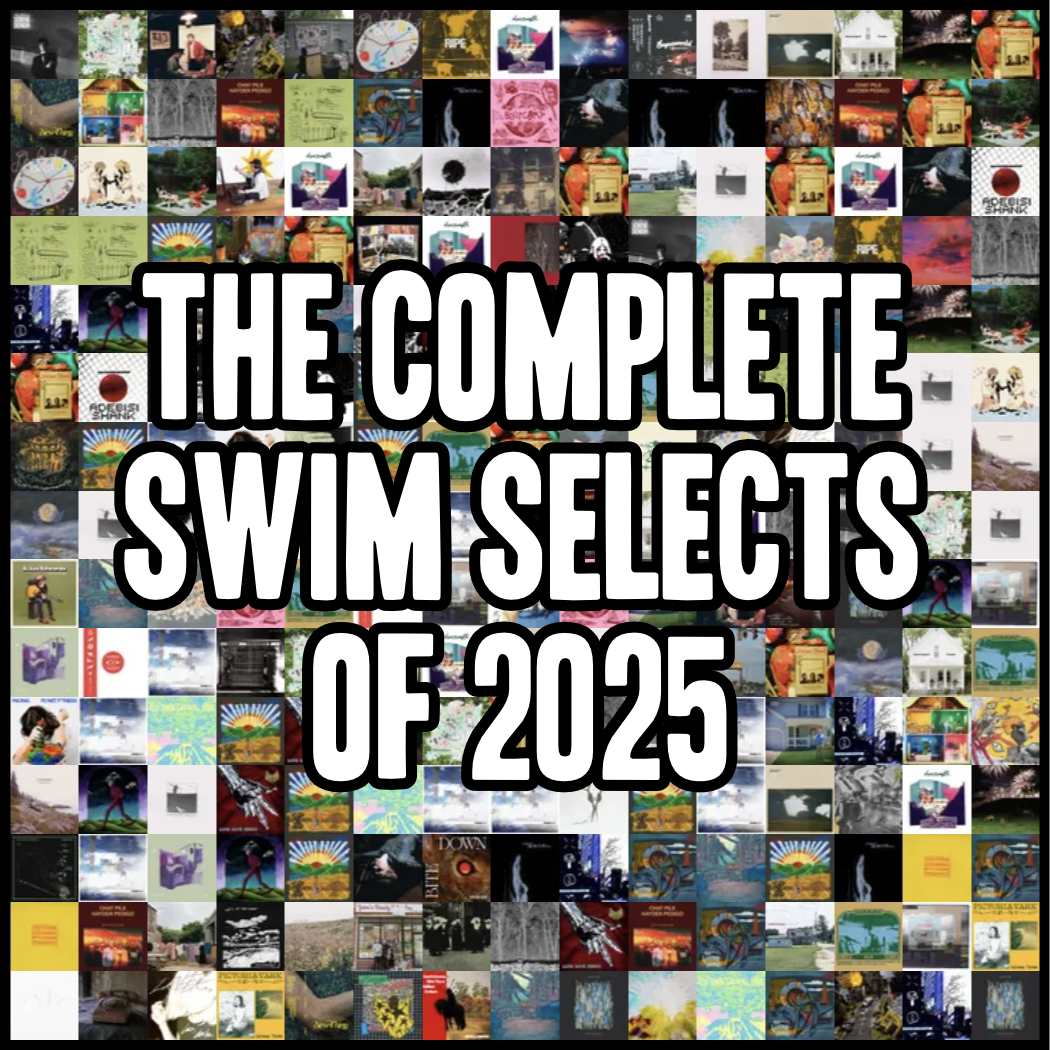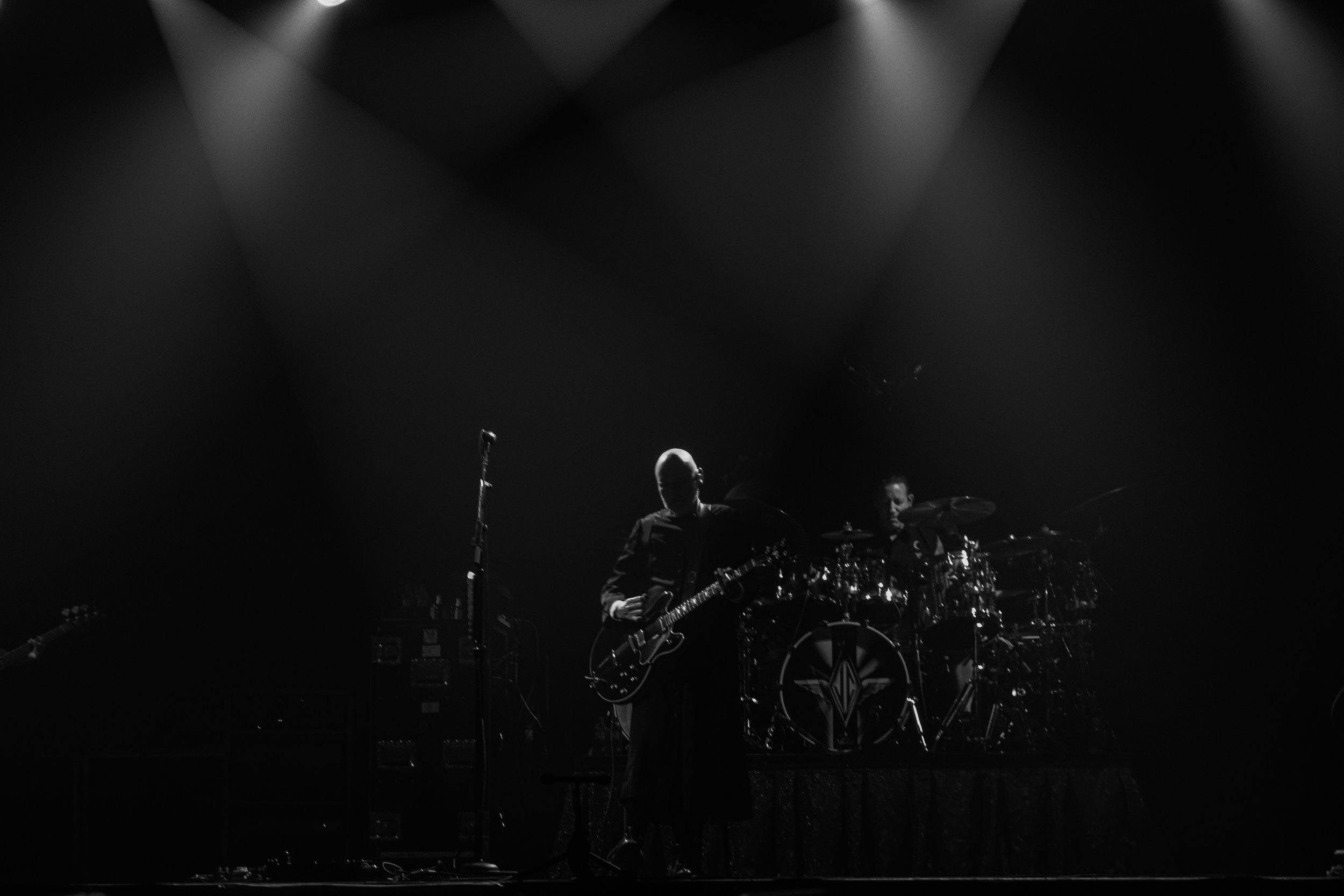Ten Years of Tunnel Blanket: The Definitive Statement on Death
/What is death? We don’t know, and that terrifies us. We know that death is the end of life, but we are incapable of understanding anything beyond that. This ambiguity is a frightening prospect that has haunted mankind for as long as we’ve been able to comprehend it. Death may be a fact of life, but that knowledge doesn’t alleviate any of the dread that comes with it.
As humans, we’ve spun reams of text speculating and prophesizing about what comes after life. While some find solace in religion, others turn to art in order to process their thoughts and feelings about the afterlife. Whether it’s reckoning with their own eventual death or the death of a loved one, some artists have spent their entire lives trying to depict, understand, and grapple with the uncertainty the eventually greets us all.
Albums about death are often heavy, brutal, and filled with grief. That makes them far from a casual listen, but it has also resulted in some of the most powerful pieces of music of all time. Albums like Mount Eerie’s A Crow Looked at Me, which finds a husband bereft with grief after his wife’s passing. Skeleton Tree by Nick Cave depicts a father processing the tragic loss of his teenaged son. Japanese Breakfast’s Psychopomp sees a daughter working through the untimely death of her mother. There’s 808s & Heartbreak, Hospice, Funeral, and Springtime and Blind, just to name a few. Not to mention my personal favorite, Sufjan Stevens’ Carrie & Lowell, a record I’ve already spent thousands of words meditating on. Death is one of the great human questions, so it should come as no surprise how much effort we’ve collectively expelled trying to understand it.
These albums I just listed all tackle death from their respective artist’s genres. As a result, these records each do an excellent job of fleshing out different aspects of loss and grief in their own ways. Despite their unique stylistic leanings, one factor that ties all of these albums together is the presence of lyrics. Yes, every one of these artists, from the lo-fi grief of Mount Eerie to the fist-balling punk of Fiddlehead and the auto-tuned croons of Kanye, all work through death with the written word in one form or another. From where I sit (and despite the fact that I’m writing this currently), written language is inherently limiting when it comes to understanding something as large and cosmic as death. Death is bigger than any word, phrase, sentence, or sentiment. It just is. It’s inherently unknowable until you arrive at it yourself, and that’s what scares us. This wordless approach to understanding death is what sets This Will Destroy You’s third studio album apart from every other piece of art broaching the topic of the great beyond.
This Will Destroy You first made a name for themselves in the mid-2000s with the release of Young Mountain and a self-titled record in 2006 and 2008, respectively. As great as these records are (I’ve written about Young Mountain as an entry point into the post-rock genre), they are, for better or worse, “textbook” instrumental rock releases. They follow the same cinematic structure laid out by fellow Texas post-rockers Explosions in the Sky with dynamic tracks that crest from subtle to sweeping in powerful ways deliberately designed to tug on your heartstrings.
As I grew into the post-rock genre, I gradually worked my way through This Will Destroy You’s discography. While Young Mountain and This Will Destroy You offer logical extensions of the standard post-rock trappings, the group’s third album, Tunnel Blanket, threw me for a complete loop upon first listen.
Both Young Mountain and This Will Destroy You clock in at under an hour and had clearly defined song structures. The tracks begin, crescendo, and end the way that all post-rock songs do. They sounded like soundtracks to a nonexistent movie, and that’s what drew me to the genre in the first place. Tunnel Blanket, however, finds the band leaning more heavily into their ambient, drone, and shoegaze influences for a sound that the band described as “doomgaze.” This move away from traditional post-rock song structures led to a more amorphous (or, as I felt back then, boring) listen. Boy, was I wrong.
No song better exemplifies Tunnel Blanket’s shapeless approach to post-rock than its opener, “Little Smoke.” This 12-minute track begins with a pensive series of keyboard notes paired with a subtly-building swirl of distortion. These two elements plod forward, entwining with each other, then dispersing and evaporating like… well, smoke. As the keys dance, this cresting wall of white noise slowly begins to fade, eventually leading to a second of complete silence. Then, like being jolted awake by the sensation of falling, the full band thrusts into the track with a towering riff fitting of a Mogwai song. The cymbals crash, the bass rattles, and the guitar repeats the same high-frequency strum over and over again to a hypnotic effect. The riff lumbers forward with this sort of searing, distorted scream that feels simultaneously sharp with an acute pain and dulled to the point of numbness. After about six minutes, this swaying instrumental subsides and the delicate keys emerge once more, carrying the listener out of the track with a meditative and precious coda that provides a direct contrast to the brash sonic violence they just weathered.
The following track, “Glass Realms,” opens with a fluttering wall of static that fades in and out over a backdrop of gorgeous strings. The orchestra hangs on pristine sustained notes as the static fluctuates from distracting to nonexistent. By the end of the song, the static has grown to subsume the strings, moving from one headphone to the other, jumping back and forth like a predator stalking its prey. Songs like these are what confused me upon first listen; no guitars, no drums, no bass, no nothing, just strings and a weird buzz of white noise. Hardly a post-rock song. Now, I view this song as a beautiful work of art, a meditative reflection that provides a gorgeous counterpoint to the brutality of “Little Smoke.” This song is where the record’s concept truly begins to emerge as it depicts the wholly unknowable notion of death itself, not through overt lyricism but a sense of inescapable and inevitable darkness.
“Communal Blood” continues this train of thought, now with the band’s full instrumentation at play once more. Again, a subtle swirl of ambient reverb drives the track forward while the band members play their instruments with the utmost subtlety. The cymbals are barely brushed, the bass is gently strummed, and all of these notes are given enough breathing room to sustain and rattle out into absolute silence before the next. This song builds to a more traditional post-rock crescendo where the reverb grows and the intensity increases. All of this gradually picks up speed until the band reaches a triumphant cadence that shakes with some sort of wondrous and almighty power.
The rest of the album follows a similar structure. “Reprise” brings back the beautiful keys courtesy of Donovan Jones. “Killed the Lord, Left for the New World” pairs carefully-wielded reverb with a driving electronic beat, wind chimes, and a drum roll while disembodied voices float through the mix uttering unintelligible half-phrases. “Osario” acts as a brief mid-album stopgap featuring a warbling electronic beat that resembles the artificial breaths of a ventilator. While the album hangs together perfectly, “Black Dunes” was the one song that stuck out to me most on my first few listens. Possessing perhaps the most ferocious and forthright melody on the entire release, “Black Dunes” begins with a remorseful instrumental that eventually erupts into a brutal and crushing wall of unfathomable depth. It’s a song you can feel the full weight of, and that’s not something you get to experience in music very often.
Post-rock has always felt “cinematic,” there’s a reason why bands like Mogwai and Explosions in the Sky get tapped to score films so often. This genre captures a sort of wordless power that can soundtrack anything from a high school football game to the zombie apocalypse. The beauty is that these songs can score practically anything you want; they are objectively beautiful and musical enough that nearly anyone can enjoy them, yet they are faceless and wordless, which lends them this amorphous quality. Post-rock songs generally have a hard time carrying out a concrete “concept” or a “message” because the dynamic crescendo-based instrumental is the message. At worst, this genre can feel like powerful music just for powerful music’s sake, but the flip side is that this “blank canvas effect” means the listener can project whatever they want onto the songs, and that’s a powerfully attractive prospect. This quality is both a blessing and a curse for the post-rock genre; it makes this type of music rich and all-encompassing, yet inherently unknowable.
You could listen to Tunnel Blanket and take it at face-value as a more subtle and ambient side of the post-rock spectrum, but I think that’s a disservice to the band’s creativity. That’s how I spent the first few years interpreting this record and why I thought it was just a more boring version of what the band had done before. What sets Tunnel Blanket apart from other albums in this genre doesn’t reveal itself until the tail end of the release… and even then, it’s only there for those who are willing to listen close enough.
Album closer “Powdered Hand” opens with a short series of piano notes and a single resonant floor tom that echoes through the listener’s body. Spaced-out hi-hat taps keep time as the keys counterbalance this heavy drumming with an air of lightness. Working together, these elements formulate a bright and sunny melody that feels like the clouds opening up after a spring rainstorm. Again, a swirl of static emerges, pushing the track forward and giving the listener something active to focus on aside from the spaced-out drums and keys. Midway through the song, this static unfurls and reveals itself to have a slowed-down human voice.
We can only make out a few words before the voice reverts to static and the instruments re-establish their melody. After a several-minute-long interjection, the static fades, and the voice becomes clear once again. It’s a little bit jumbled and still far-off in the mix, but what we can make out is a scientist, Temple Grandin, explaining the visual phenomena of death, specifically the spirals and tunnel-shaped visions that people tend to see right before they die. It’s here that the name of the album, and its topic, fully-reveal themselves. Though wordless and abstract for a majority of its runtime, Tunnel Blanket is an album about death, specifically about the phenomena of death.
According to an interview with Nothing But Hope and Passion, this sample is taken from a documentary called Stairway to Heaven. The band explained the inclusion of this clip in the following quote:
[Temple Grandin’s] perspective on the “afterlife” (or lack thereof) is fascinating. Tunnel Blanket was meant to be a metaphor for death or the moment right before death. Despite what you believe, that moment will be the most true, the most raw flash you will ever experience. It will always be a mystery, and as much as human beings want to distract ourselves with material bullshit, religion, etc., the outcome will always be inevitable.
I’ve never heard an album tackle the bleak darkness of death quite like Tunnel Blanket. While artists have focused on describing deaths’ effects on them, this album feels like listening to death itself.
Tunnel Blanket is a fuzzy, grey wall that fluctuates from somber piano to larger-than-life post-rock crescendos that all mirror physical actions of the body. These tracks breathe, feel, and reverberate in the same way that we do. From the heartbeat-like percussion to the constantly swirling ambient noise, the collection of eight songs on Tunnel Blanket represent an hour-long depiction of the experience of death.
Tunnel Blanket’s wordless exploration of death works to its advantage. This record delves into death and finds a home within it over the course of its hour-long runtime, which is something I’ve never heard any other “death album” do.
Yes, death is remembering the details of a loved one, missing the space that someone held in your life, and combing through all their belongings after they’ve moved on. Those are all true experiences, and none of them are wrong or invalid. However, they are all very grounded experiences. They are “above-the-shoulders” ways to process, talk about, and relate to death. Tunnel Blanket grounds its understanding of death not in language or retelling experiences of loss and grief but in pure feeling and emotionality. It seeks to portray death in a way that no other artist has. On this album, the band is concerned equally with depicting the physiological effects of death as they are with capturing its profound vastness.
Tunnel Blanket offers an alternative perspective on mortality; it represents the other side of our Earthly experience, the universal that we will all face at one point or another. It’s objectively heartbreaking to listen to an album like A Crow Looked at Me and hear Phil Elverum talk about receiving his dead wife’s mail, but that’s a personal experience that relies on the listener’s empathy. It’s sad no matter how you cut it, but that’s just one singular experience on the cosmic scale. Tunnel Blanket tackles death by becoming it. This record explores death from the perspective of an ambivalent absolute. It offers no answers and presents no resolution. Much like death itself, Tunnel Blanket just is.





























